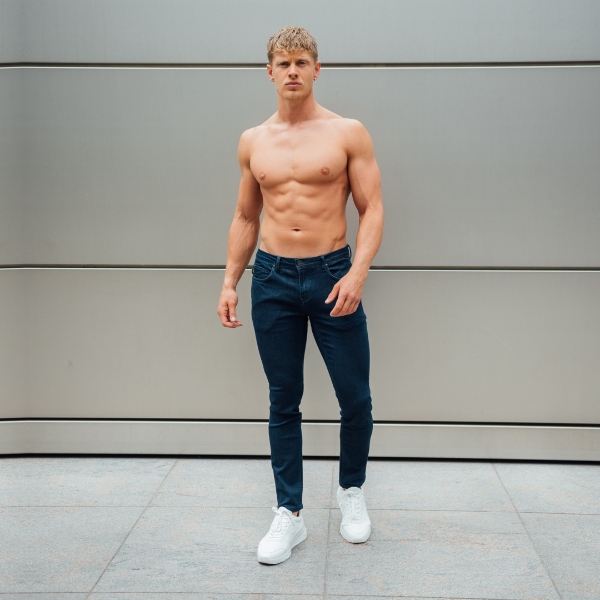The fashion industry has been revolutionised since the eCommerce industry boomed. Today, eCommerce and Fashion are interlinked like no other two industries due to the way they complement one another. As a result, this relationship has seen the rise of smaller brands that wouldn’t have stood a chance against the more established fashion giants in the brick and mortar space.
Innovations to fashion eCommerce stores have even seen some established brands fall by the wayside and industry lightweights generating more revenue than they could have imagined.

eCommerce and Fashion Stats
The data show that eCommerce is essential for fashion, and fashion for eCommerce. It’s a symbiotic relationship that makes so much sense when you get to the reasons why they need each other, but that will be discussed later. For now, we’ll take a brief look at the current state of eCommerce and fashion through statistical data.
Worldwide, eCommerce fashion stores generate close to $600 billion per annum, with that figure expected to rise well past $700 billion by 2022.
In the US alone, fashion eCommerce accounts for nearly 30% of sales, and continues to grow.
What’s astounding is that it never appears to be slowing down and has gained more ground in the midst of the COVID-19 pandemic. As a result, fashion and eCommerce boomed when people weren’t able to go to their local retail stores or preferred to buy online.
Similarly, the potential customers for fashion eCommerce stores keeps on growing as the generation who have grown up online start getting jobs. Indicators point to new fashion and eCommerce customers being between 16 and 35 years old.
Finally, the statistics behind the reason for this rapid growth points to the way eCommerce stores can offer more personalisation than fashion ever did, speaking directly to its customers as an individual.
Social media advertising plays a huge role here with 43% of all purchases being made due to personalised ads online – important to note when considering whether or not to opt-in to ad tracking
Reasons why eCommerce has boosted fashion
With the majority of people in the world today online it’s not surprising that online shopping is extremely popular. Innovations and advancements in shipping times and ease of pay have boosted this phenomenally. However, there are other factors at play that have an even more important role:
Styles on-demand – fast fashion outlets can create styles “right now” for every season and create new collections to elevate the customer experience. The immediacy of clicking and receiving items has also replaced having to leave your couch for “retail therapy”.
The rise of global markets outside of the West – namely in the East where countries like South Korea and China do a large amount of their shopping online.
A wider variety of selection, stores and styles – people are always searching for clothes that suit their personality – and in days gone by you could have potentially searched for hours to no avail. As a result, online shopping and eCommerce fashion stores fill this gap being just a Google search away.
Everyone has a smartphone – you harness all the power of the world in your pocket, or hand. Whether you’ve opted in to marketing and receive an email or SMS, are trawling Instagram or Facebook and an ad catches your eye, or see a character on your favourite TV show wearing a piece you love, you’re simply a tap and swipe away from adding to your wardrobe.
Lower prices are a major feature of eCommerce stores – fast fashion outlets able to deliver all types of clothing at a fraction of the price. Coupled with regular discounts, online shoppers are always connected to the next sale anticipating what to get next.

Advantages of eCommerce and fashion
eCommerce has breathed new life into the somewhat stagnant fashion industry that was previously dominated by a few established brands.
Now, brand loyalty is out the window and everything is centered around who can market themselves better in this crowded space by using their own skills and new ideas, bringing something fresh to the table.
Due to increased competition, brands have got better at marketing themselves and ensuring the quality of their products that they sell. One of the major reasons is that brands today live and die by their reviews, which are highly important for people before they make their first purchase.
A few main improvements we have seen in the eCommerce and fashion space are:
- Digital innovation
- Worldwide shipping
- Store presentation
- Top-quality customer service
- Rewards for loyalty
- One-click purchases
- Personalisation – a blessing, not a curse
- Strong social ads
In saying that, something must be said for the contribution social media has made towards entrenching eCommerce in the fashion industry.
The main social media platform is Instagram, where visually appealing ads and influencers drive engagement and broadcast the best that the brand has to offer.
Fashion retailers are able to connect with their customers and potential customers through social media and build long-lasting trust and relationships with them, making them feel a part of the journey.
In future, we may see another social media platform, TikTok, harness their potential to contend with Instagram and Facebook as the major platforms for fashion eCommerce.
One of the advantages of TikTok is how it feels more personal and real than many other apps and their videos suck you in and ask you to engage constantly. In the near future we’ll be discussing this further, so stay tuned!
The future of eCommerce and fashion
Nothing is ever certain but there’s no harm in attempting to predict where the eCommerce and fashion industry is going in the next few years. If one thing is certain, it’s that the aforementioned digital innovation will become more prominent.
This is, namely, in terms of AI, VR and personalisation.
AI
The growth of eCommerce fashion brands is closely linked to the way that they use artificial intelligence. We’re almost there, with how easy it is to make a purchase via social media, website or email without speaking to a person, but this goes even further with highly intelligent bots who are capable of handling any and all queries. Brands are already hard at work to beef up their AI and predictions point to little to no person-to-person interactions by as soon as 2022.
VR
One of the main pitfalls of fashion eCommerce is the fact that they don’t get to try on the clothes before you buy them. However, eCommerce fashion brands are hard at work to make this experience as lifelike as possible – the only bridge not crossed yet is actually being able to feel the fabric. Through virtual reality, fashion brands have found the answer to customers being able to see how the clothing looks on them, how it fits and if they like it or not through augmented reality fitting rooms.
More personalisation than ever before
Personalisation is key to online shoppers who want to feel like individuals, with fashion brands hard at work to mimic the brick and mortar experience, and elevate it further. This is clear in the way that brands are already remembering returning customers and their preferences, offering them new suggestions and dedicated home pages. Furthermore, fashion eCommerce brands are also offering their customers virtual assistants – real people who act as your very own personal shoppers and help you select the perfect wardrobe.
In conclusion, with globalisation at the forefront of this move towards online retail and fashion eCommerce, the industry will surely continue to grow exponentially over the next few years.
Is this the death of the brick and mortar store? Or the end of the big brands altogether?
One thing is for sure. With fashion now happening at all times of the year and people demanding more styles and innovations, choosing only the savviest brands, it’s important to work with an agency who shares the same passion for fashion as you do – so you can focus on your store and leave the marketing to us.
If you’re interested in speaking to us, then book a call today, no strings attached, and find out if we’re the right fit for you.

